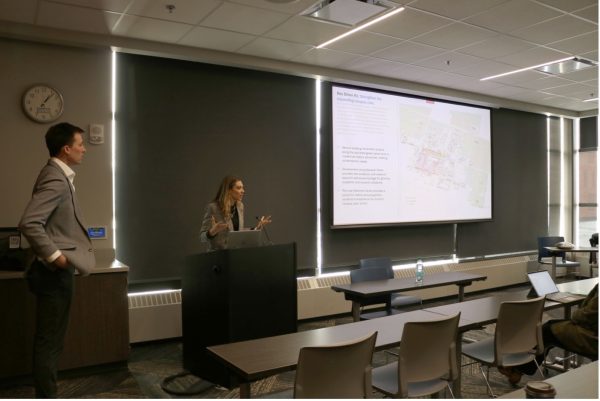Gov. Daugaard says other towns should prepare for flood
May 29, 2011
PIERRE, S.D. (AP) — The U.S. Army Corps of Engineers’ decision to release even more water from Missouri River dams will not only cause additional problems for the central South Dakota communities of Pierre and Fort Pierre, but also for the downstream cities of Yankton and Dakota Dunes in the state’s southeastern corner, Gov. Dennis Daugaard said Sunday.
Emergency earthen levees already under construction in Pierre and Fort Pierre also will be built another 2 feet higher in an attempt to protect homes, businesses and public facilities from the rising water, officials said. The new release figures also mean several hundred additional homes and businesses may be in danger of flooding in Pierre.
North Dakota also is bracing for the increased Missouri River releases, but the corps said construction of more than seven miles of earthen levees to protect against flooding in Bismarck and Mandan should be completed long before planned maximum releases at the Garrison Dam.
In South Dakota, several hundred homeowners in low-lying areas of Pierre and Fort Pierre have been working feverishly for several days, moving their belongings to higher ground and laying sandbags around the houses. They are trying to protect their houses as the corps runs more water through the already-full Missouri River reservoirs to drain flows from melting snow and recent heavy rains upstream in eastern Montana and Wyoming and western South Dakota and North Dakota.
Law officers directed traffic at busy intersections in both cities Sunday as dump trucks hauled sand for the levees, smaller trucks with trailers hauled furniture and boxes away from flood areas, and other trucks delivered sandbags to residential areas at a more urgent pace.
The corps announced late Saturday it would boost releases from the dams above levels announced just two days earlier because of expected additional heavy rains upstream.
“Yesterday was not a good day for South Dakota in terms of the weather, but I saw a lot of good things in South Dakota,” Daugaard said Sunday, his voice cracking.
Daugaard said neighbors have been helping those in flood zones move property and lay sandbags. He said his wife, Linda, and other family members helped prepare sandbags Saturday.
“We’re going to continue to work together and get through this,” said Daugaard, who was at the state’s Emergency Operations Center, where state, federal and local officials are conducting a coordinated campaign against the rising waters.
Water had already moved into some residential areas of Fort Pierre, but was expected to rise another 4 feet in Pierre and Fort Pierre within a couple of weeks.
The governor noted that the flooding in South Dakota threatens only property, unlike the tornadoes and floods that have killed many people elsewhere in the nation.
“In the end, although it is very distressing and very discouraging, it is just things. In the end, things don’t really matter,” Daugaard said.
The light rain falling in the Pierre area Sunday would not affect water flows, but could hamper construction workers building the levees, officials said.
The governor said he has asked the corps to provide more information about what areas might be flooded in Yankton and Dakota Dunes, which are located below the last dam on the Missouri River. Water levels in those two cities could reach 3 feet higher than previously expected, he said.
People in Yankton and Dakota Dunes should begin planning immediately to protect their property and plan for possible evacuation, the governor said.
Lt. Gov. Matt Michels will help coordinate flood-fighting efforts in the Yankton and Dakota Dunes area.
In the Pierre area, the corps announced it would hold releases from Oahe Dam at the current 85,000 cubic feet per second until Thursday to provide time for building the levees, which were originally intended to be 4 feet high but now will be 6 feet. Releases will then gradually increase to 150,000 cubic feet per second by June 15 and remain at that peak for a month or so.
The river between Pierre and Fort Pierre is currently about 1,430 feet above sea level and will ultimately rise to 1,434, Daugaard said. The levees will be built 2 feet higher than the expected maximum water level, he said.
Pierre Mayor Laurie Gill said several hundred homes were initially expected to be affected by the flood, but the increased releases will now put an additional several hundred homes and businesses at risk, including part of Pierre’s downtown business district.
Gill joined the governor in urging residents not to rely on the levees to save their homes and businesses, but instead to protect property under the assumption the worst will happen.
If the levees work, “that’s a good thing, and we can celebrate later,” Gill said.
Gill and Fort Pierre Mayor Sam Tidball said water, electrical and other utilities were in no danger as of Sunday.
Eric Stasch, operations manager at Oahe Dam, said the corps and the contractor it has hired are doing everything possible to get the levees built before releases rise again.
Daugaard urged anyone with a bulldozer to volunteer to help build the levees, and he said he was suspending the requirement to have a commercial driver’s license in the area so farmers and ranchers could help drive trucks and heavy equipment in the construction effort.SD gov. says other towns should prepare for flood





















